Toiminta
Teräsrakenneyhdistys edistää metallirakenteiden käyttöä tiedottamalla ja markkinoimalla sekä vauhdittamalla alan tutkimus- ja kehitystyötä ja koulutusta.
- Toiminta, Julkaisut
- Teräsrakenne-lehti
- Kirjat ja julkaisut
- Eurocode 3 -oppikirja
- Eurocode 3 -kirjasarja
- Liittorakenteet -oppikirja
- ECCS:n julkaisemat kirjat
- Ilmaiset julkaisut ja lopputyöt
- Masto-ohjeet
- Teräsrakenneyhdistyksen webinaarit
- Pätevyydet
- TRY normitoimikunta
- Tuotehyväksynnät
- Normikortit
- TRY Infraryhmä
- TRY Pintakäsittelyn asiantuntijaryhmä
- Runkoryhmä
- TRY Paloryhmä
- ECCS
ECCS:n julkaisemia kirjoja nyt tilattavissa TRY:ltä
Tilaukset sähköpostitse: info tryry.fi
tryry.fi
European design guide for the use of weathering steel in bridge construction – 2nd edition
This document updates an earlier ECCS document from 2001: The Use of Weathering Steel in Bridges; Publication No. 81 of the European Convention for Constructional Steelwork (ECCS). Since the publication at that time, the Eurocodes have become established throughout Europe and various other standards and national guidelines on weathering steel construction have been updated, in some cases substantially. In addition, extensive new knowledge about the use of weathering steel has been gained through progressive practical application and various research projects. For these reasons, there are significant differences between the current document and the previous publication.
Kirja on saatavilla pdf-tiedostona ja ladattavissa tästä
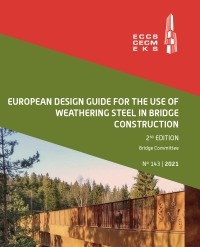
Design of Steel Structures
2016, 2. painos, 511 sivua
This book details the fundamental concepts of Eurocode 3, Part 1-1: General rules and rules for buildings and their practical application. Following a discussion of the Eurocode 3 basis of design, including the principles of reliability management and the limit state approach, the steel material standards and their use under Eurocode 3 are detailed. Structural analysis and modelling are presented in a chapter that will assist the design engineer in the first stages of design. This is followed by a major chapter that provides the design criteria and approaches for the various types of structural members. The theoretical basis and checking procedures are closely tied to the Eurocode requirements, making for a unique presentation of theory into practice. The following chapters expand on the principles and applications of elastic and plastic design of steel structures. Throughout the book, many design examples presented represent a significant part of the manual. These examples will facilitate the acceptance of the code and provide for a smooth transition from earlier national codes to the Eurocode. This 2nd edition incorporates new material on torsion of steel members and additional design examples.
Hinta: TRY:n jäsenet 60€ +ALV, ei jäsenet 85€ +ALV
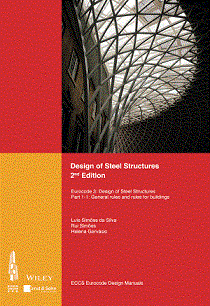
Design of Joints in Steel and Composite Structures
2016, 410 sivua
This book details the basic concepts and the design rules included in Eurocode 3 “Design of steel structures” Part 1-8 “Design of joints”. Joints in composite construction are also addressed through references to Eurocode 4 “Design of composite steel and concrete structures” Part 1-1 “General rules and rules for buildings”. Attention has to be duly paid to the joints when designing a steel or composite structure, in terms of the global safety of the construction, and also in terms of the overall cost, including fabrication, transportation and erection.
Therefore, in this book, the design of the joints themselves is widely detailed, and aspects of selection of joint configuration and integration of the joints into the analysis and the design process of the whole construction are also fully covered. Connections using mechanical fasteners, welded connections, simple joints, moment-resisting joints and lattice girder joints are considered. Various joint configurations are treated, including beam-to-column, beam-to-beam, column bases, and beam and column splice configurations, under different loading situations (axial forces, shear forces, bending moments and their combinations). The book also briefly summarizes the available knowledge relating to the application of the Eurocode rules to joints under fire, fatigue, earthquake, etc., and also to joints in a structure subjected to exceptional loadings, where the risk of progressive collapse has to be mitigated. Finally, there are some worked examples, plus references to already published examples and to design tools, which will provide practical help to practitioners.
Hinta: TRY:n jäsenet 60€ +ALV, ei jäsenet 85€ +ALV
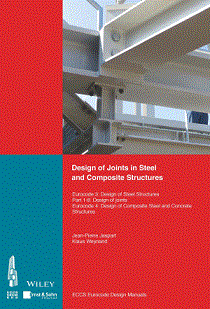
Design of Steel Structures for Buildings in Seismic Areas
2017, 510 sivua
The book deals with the seismic design of steel structures based on EN 1998-1 (2004). It contains the essentials of theoretical background of seismic engineering, design requirements and detailing rules for building applications.
Calculation examples are included in the relevant chapters in order to provide a better understanding to the Reader. In addition, the book provides insights about the design assisted by testing as well as some design examples of real buildings: Tower Centre International, in Bucharest, awarded in 2007 with the ECCS Steel Design Award, a low-rise industrial building in Romania and the seismic design of the Fire Station in Naples, awarded in 1986 with the ECCS Steel Design Award.
Hinta: TRY:n jäsenet 60€ +ALV, ei jäsenet 85€ +ALV
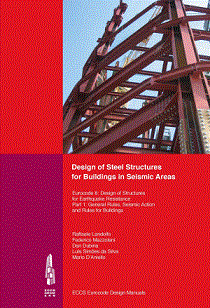
Fire Design of Steel Structures
2. painos, 2015, 501 sivua
This book explains and illustrates the rules that are given in the Eurocodes for designing steel structures subjected to fire. After the first introductory chapter, Chapter 2 explains how to calculate the mechanical actions (loads) in the fire situation based on the information given in EN 1990 and EN 1991. Chapter 3 is dedicated to the models which represent the thermal actions created by the fire. Chapter 4 describes the procedures to be used to calculate the temperature of the steelwork from the temperature of the compartment and Chapter 5 shows how the information given in EN 1993-1-2 is used to determine the load bearing capacity of the steel structure. Chapter 6 presents the essential features that characterise the advanced calculation models, for thermal and mechanical response. The methods used to evaluate the fire resistance of bolted and welded connections are described in Chapter 7. Chapter 8 describes a computer program called ‘Elefir-EN’ which is based on the simple calculation models given in the Eurocode and allows designers to quickly and accurately calculate the performance of steel components in the fire situation. Chapter 9 looks at the issues that a designer may be faced with when assessing the fire resistance of a complete building. This is done via a case study and addresses most of the concepts presented in the previous chapters.
The concepts and fire engineering procedures given in the Eurocodes may seem complex to those more familiar with the prescritive approach. This publication sets out the design process in a logical manner giving practical and helpful advice and easy to follow worked examples that will allow designers to exploit the benefits of this new approach to fire design. For this second edition the authors revised and extended the content. The book contains some new sections, e.g. a comparison between the simple and the advanced calculation models, as well as additional examples.
Hinta: TRY:n jäsenet 60€ +ALV, ei jäsenet 85€ +ALV
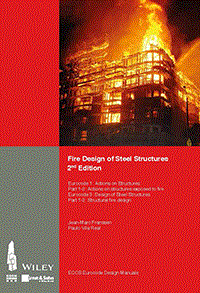
Hintoihin lisätään ALV. Tilaukset sähköpostitse: info tryry.fi
tryry.fi
- UUTISET , TAPAHTUMAT
- Uutisarkisto
- Tilaa TRY:n Uutiskirje
- Teräsrakennekatsaus
- Tapahtumakalenteri
- Eurocode-koulutus
- Teräsrakennetyönjohtajien koulutus
- Teräsrakentamisen T&K-päivät
- Teräsrakennepäivä
- Vuoden Teräsrakenne -palkinto
- TRY Seminaarit ja Webinaarit
- Kandipooli
- Rakentamisen ohjeet
- Teräskattomaalareiden koulutus
- TERÄSRAKENNE-LEHTI
- Tilaa Teräsrakenne-lehti
- Teräsrakenne 2/2024 -verkkolehti
- Teräsrakenne 1/2024 -verkkolehti
- Teräsrakenne 4/2023 -verkkolehti
- Teräsrakenne 3/2023 -verkkolehti
- Teräsrakenne 2/2023 -verkkolehti
- Teräsrakenne 1/2023 -verkkolehti
- Teräsrakenne 4/2022 - verkkolehti
- Teräsrakenne 3/2022 -verkkolehti
- Teräsrakenne 2/2022 -verkkolehti
